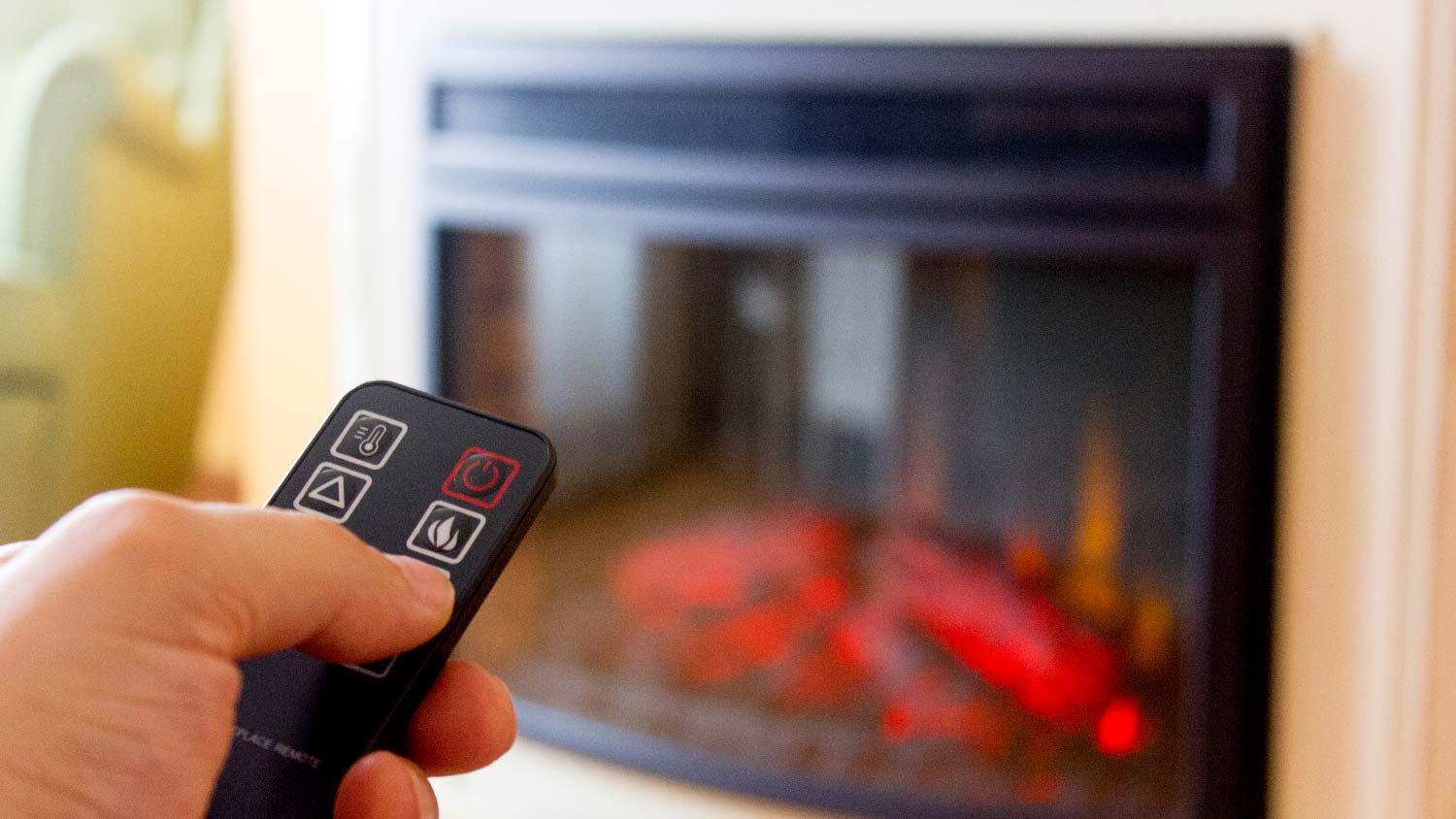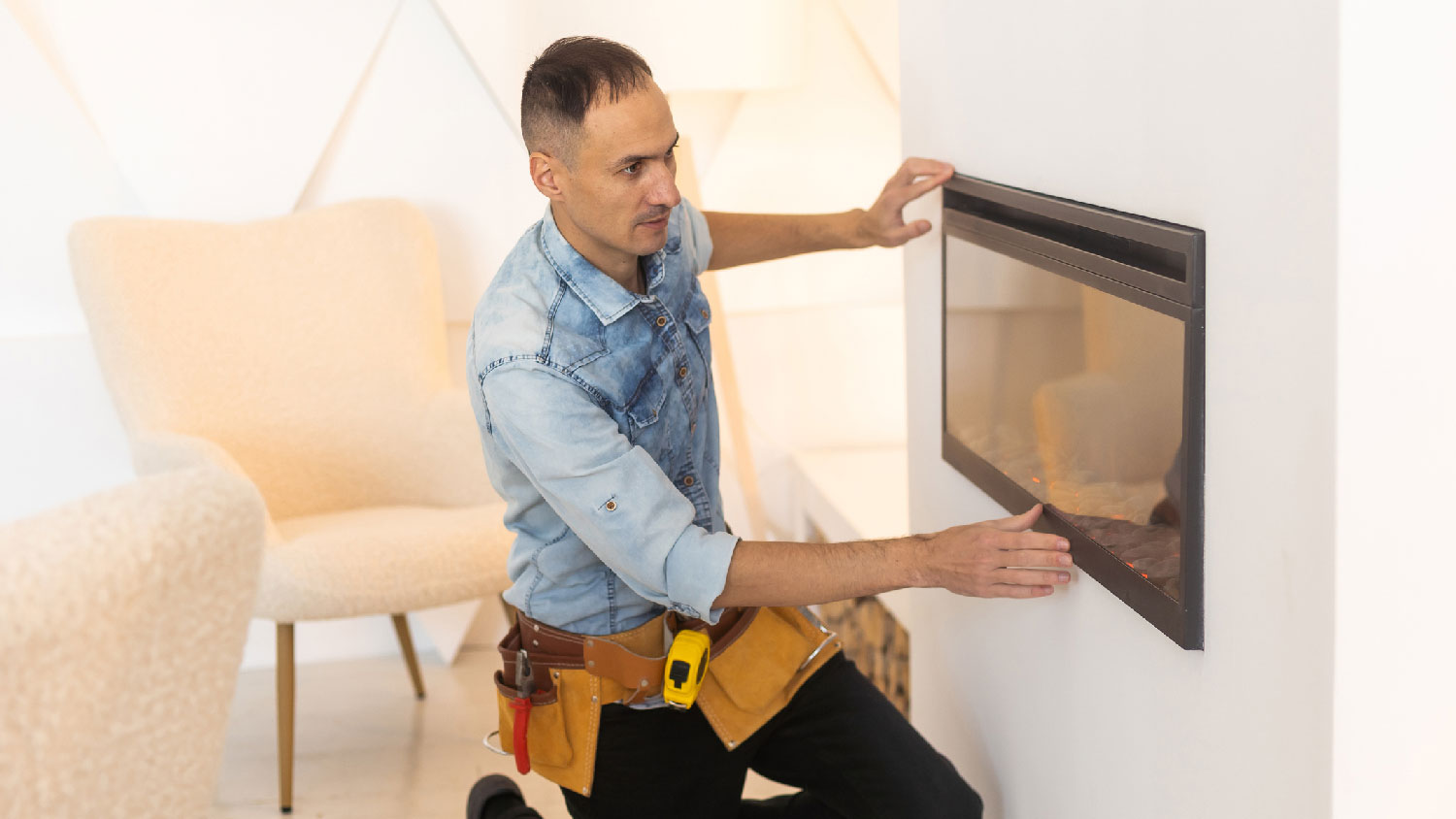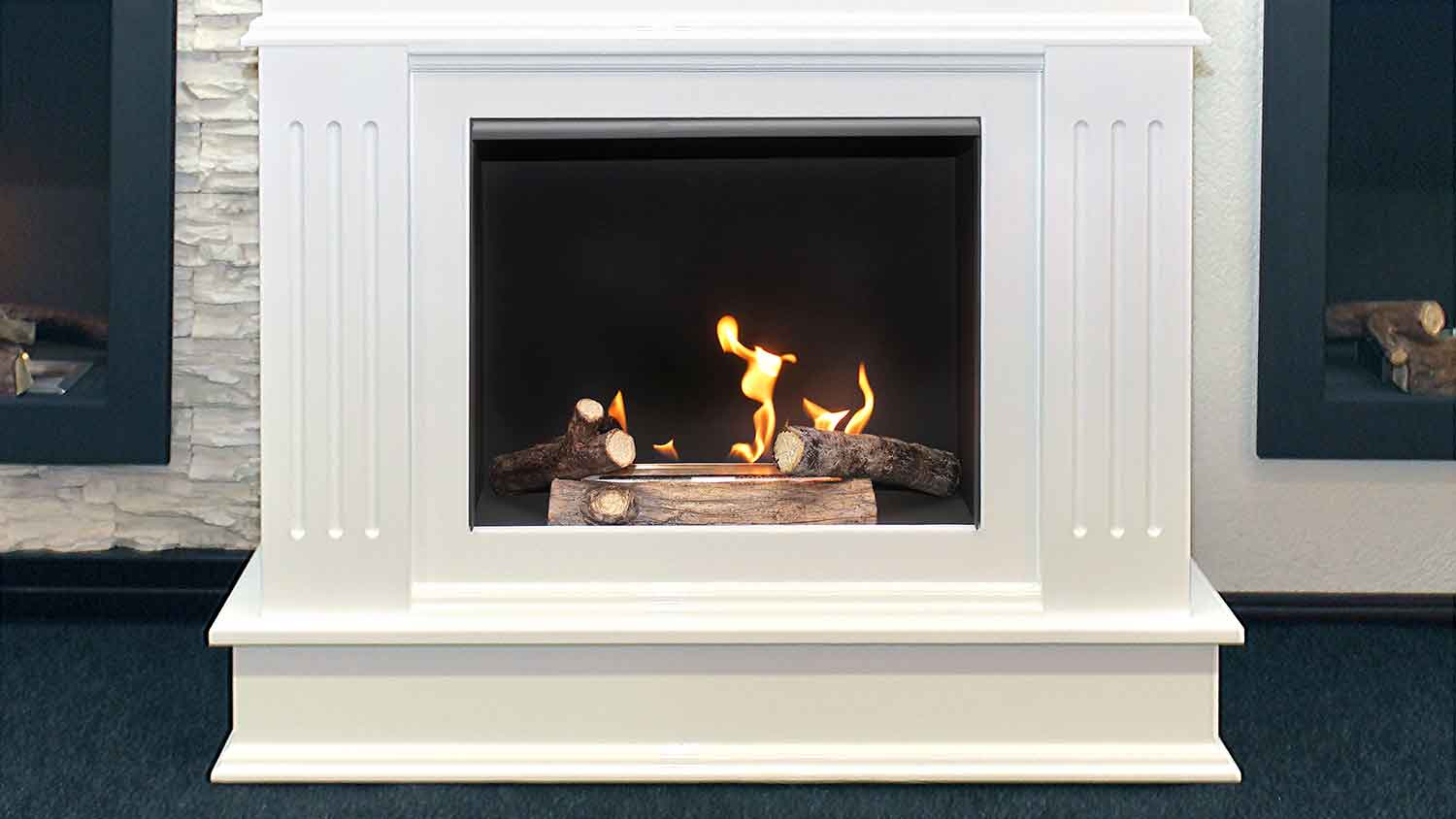
Before installing a gas fireplace insert, it’s important to understand the various cost factors. Here’s how much an average gas fireplace insert costs.
Extinguish these fireplace woes


No heat, overheating, or dim flames are common issues
Remote and power supply problems may cause auto shutoff
Keep the thermostat set between 68 and 70°F for optimal comfort
Schedule annual inspections for wiring and safety
There’s nothing quite as disappointing as going to cozy up by the fire, only to find your electric fireplace isn’t working properly. Many electric fireplace problems can keep you from enjoying the fire, including the unit failing to blow out hot air or turning on or off by itself. Follow this guide to troubleshoot the most common problems with electric fireplaces.
You turn your fireplace on, but there’s no heat blowing from the vents. The vents may be blocked, keeping the warm air from escaping. The biggest culprit, though, is the thermostat. If the room is warmer than the thermostat settings, the fireplace may not blow out hot air until that temperature drops below the setting.
Make sure the vents around the fireplace are clear. Then, double-check the thermostat settings. Increase your heat settings to make the air warmer.
If the fireplace won’t turn on at all, there could be an issue with the remote. If the fireplace remote control isn’t working, it can’t send the signals to turn the fireplace on. The fireplace may also have come unplugged, or it may have shut down for safety purposes if the sensors detected an overheating unit.
First, check that the fireplace is plugged in. If it still won’t turn on, change the batteries in the remote control and the receiver, which is in the fireplace or mounted to a wall nearby. If that still doesn’t work, reset the fireplace by unplugging it, letting it sit for 5 to 10 minutes, then plugging it back in.
The fireplace is lit and sending out air, but the room still doesn’t feel as warm as it should. This means there is likely an issue with the thermostat.
Check that the thermostat is set to your preferred temperature. If the air still doesn’t feel warm, hire a pro to check for any wiring or sensor damage to the thermostat.
You turn on the fireplace, but then the lights to the whole room flicker or worse—a fuse blows. If your electric fireplace shares a circuit with other appliances, it can overload the circuit breaker, causing the power to flicker or shut off entirely when the fireplace powers on.
Start by plugging the electric fireplace into a separate outlet, away from any other appliances. If you still experience electric fireplace problems, you may need to hire an electrician to upgrade the electrical panel with a dedicated circuit for the fireplace.

A fireplace with a mind of its own may seem quirky, but it’s an electric fireplace problem you want to solve ASAP since you shouldn’t leave a running fireplace unsupervised.
The fireplace may be turning on or off due to a faulty remote, programmed timer, or incorrect temperature settings. It may also shut down if it senses overheating or a rapidly dropping room temperature.
To solve this issue, make sure the thermostat and timer settings aren’t the reason the fireplace is turning on or off. If that’s not the culprit, change the remote batteries.
Ensure there are no open windows, fans, or other sources of drafts near the fireplace, as rapidly cooling temperatures can trigger some models to shut off. Then, check that the fireplace vents aren’t blocked, since an overheating unit can shut off as a safety feature.
When comparing a gas fireplace to an electric one, an electric model may have dim or flickering flames, which have nothing to do with the amount of gas flow. If the lights on your electric fireplace don’t look as bright or steady as they should, it may be that the settings were accidentally changed, or the wiring connections could be loose.
First, check that the light settings are to your liking. If everything looks good and the flames still aren’t bright, hire a fireplace repair pro to inspect the wiring and diagnose the problem.
You want your fireplace to give off warmth, but too much warmth isn’t a good thing. Fireplaces can overheat if the temperature is set too high or if the vents are blocked, preventing heat from escaping.
Clear the area around the fireplace, ensuring that any vents aren’t blocked. If you built a fireplace yourself, make sure there are no vents on the back or sides of the fireplace that are right up against any walls or fireplace surrounds.
Once the area is all clear, check that the thermostat isn’t set too high. While the temperature setting you choose depends on your specific fireplace model, room size, and personal preferences, the U.S. Department of Energy recommends setting the heat to around 68 to 70 degrees Fahrenheit to strike a balance between comfort and energy savings.

If simply clearing the vents, changing the remote batteries, and reviewing the settings on your fireplace don’t clear up any problems, it’s time to hire fireplace repair pro near you to handle the troubleshooting.
Electric fireplaces have many parts that can malfunction, not to mention the risk of faulty wiring. It’s safest to let a trained pro resolve any electric fireplace problems, and you can just worry about when you’ll be able to settle back in front of the fire once the unit is repaired.
A little bit of fireplace maintenance goes a long way in preventing many of these common electric fireplace problems. Follow this checklist to keep your fireplace running in tip-top shape:
Change batteries: Make sure to change the remote and receiver batteries at least once per year, so the fireplace always turns on when you need it.
Clear obstructions: Always keep the area around the fireplace clear. If you have kids and pets, make sure their toys don’t end up lodged near a fireplace vent.
Dial in the settings: Check your fireplace settings about once a month and make adjustments as needed. As the weather cools down or warms up, you may want to change the temperature.
Schedule inspections: Hire a pro to perform an annual inspection. A pro will look for damage to the unit or wiring and make minor repairs before they turn into bigger issues.
From average costs to expert advice, get all the answers you need to get your job done.

Before installing a gas fireplace insert, it’s important to understand the various cost factors. Here’s how much an average gas fireplace insert costs.

The cost of removing a fireplace insert depends on the type of insert that’s installed. Read on to learn why electric is cheaper than a gas or wood insert.

The up-front cost of an electric fireplace is lower than a gas or wood-burning fireplace. This guide will help you understand what you're paying for.

If you’re preparing to install a prefabricated unit, here are the gas fireplace questions you should discuss with your contractor.

Fireplace maintenance is the best way to ensure your fireplace is working safely and efficiently. By cleaning it and hiring a professional to check it regularly, you can significantly reduce the risk of safety threats.

If you have a wood-burning fireplace, it’s important to understand what causes chimney fires so you can reduce the risk of a fire in your home.